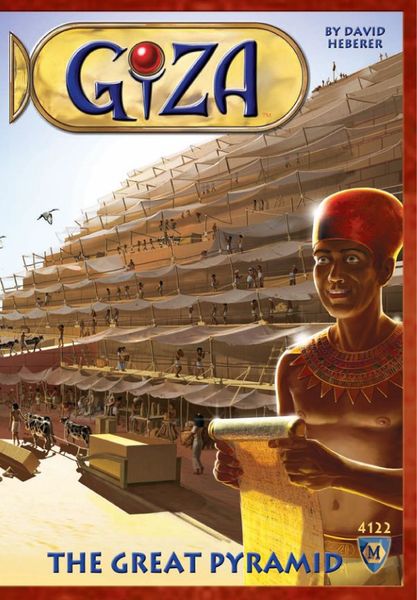Giza: The Great Pyramid (2012) Board Game
Giza: The Great Pyramid’ is a board game released in 2012, designed by David Cochard and published by Mayfair Games. The game is set in ancient Egypt, where players take on the role of builders competing to construct the Great Pyramid of Giza.
Game Components of Giza: The Great Pyramid
How To Setup Giza: The Great Pyramid
To set up the game, each player starts by receiving some food and art tokens. Each player then places their 8-10 workers in various work areas on the board, such as fishing and farming, the Temple of Ra, the artist camp, the quarries, or the lifting camps. A sled is placed in each quarry with a pyramid stone on it. The turn order is determined by players choosing roles on the turn order track, each providing different benefits.
Gameplay Mechanics and Game Objective
Player Experience
**Giza: The Great Pyramid** offers a rich and challenging experience, requiring players to balance labor, resource management, and strategic planning. Players must manage their workers effectively, ensure they have enough food to avoid penalties, and bid strategically to maximize their points. The game’s thematic depth and the physical construction of the pyramid add to its immersive and visually appealing nature.
Pros
Cons
Personal Thoughts on Giza: The Great Pyramid
**Giza: The Great Pyramid** is ideal for fans of worker-placement games and those who enjoy complex, strategic gameplay. It is particularly suited for players who appreciate thematic games with high-quality components. However, it may not be the best choice for casual gamers or those looking for a quick, easy-to-learn game. For experienced gamers, it offers a compelling and engaging experience that requires careful strategy and resource management.
We are supported by our audience. When you purchase through links on our site, we may earn an affiliate commission, at no extra cost for you. Learn more.

